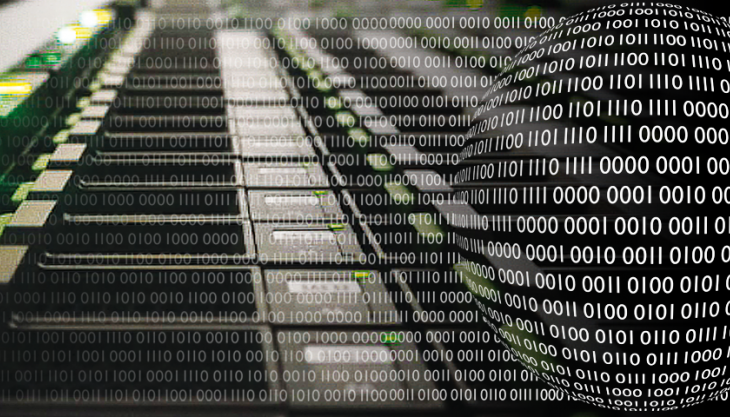Telecommunication Networks and High-Performance Computer Systems

Head of the department
Alexander B. ALEXANDROV
Новости
Head of the department
Alexander B. ALEXANDROV
In general
The Department dates back to the late 1960s, when the Institute acquired first mainframe computers: BESM-4, BESM-6, ES series. This also laid the basis for all services that maintained computers operation: Engineering Technical Support Services, Software Engineering Services, and Operator Services.
Creation and development of the IKI RAN Computer Center is inextricably linked to the names of G.I. Zabiyakin, V.P. Minaev, V.M. Pokras, L.S. Chesalin, A.P. Skoptsov, S.P. Perelygin, V.I. Shevchenko. Over the last 25 years the Department has been headed by Alexander B. Alexandrov.
March 1986 became a landmark in the history of the Institute and Department, when, the international VEGA project on Venus and Comet Halley exploration, the scientific data from space probes Vega-1 and Vega-2 were acquired, processed, stored, and displayed in real time. That was a challenge for that time, for never before a real-time image processing ad displaying was applied in space missions. A set of non-default hardware and software was developed on the basis of computing capacity of the Department, including an interface unit for the central computer and a fiber-optic communication line, and interface units for SVIT video terminals. Scientists and other telemetry users could access the data on-line from equipped workplaces, both during communication séance and later, for further detailed analysis. Soviet and foreign scientists, who participated in the experiment, highly appreciated this unique experience in accessing the data from the spacecraft and displaying them in real time not only in alphanumeric, but also in graphic mode.
The Department’s staff was directly involved in development of high-performance systems employing parallel matrix processors connected to the central processor. An example of such high-capacity system can be an array developed through the joint efforts of scientists of IKI RAN USSR and the IZOT Association (Bulgaria). The application of the up-to-date hardware components, as well as new engineering and technology solutions allowed to creation of a robust compact computer system with high superlative technical performance.
For many years IKI had utilized a high-capacity system with 10 ES-2706 matrix processors connected to ES-1037 and capable of peak performance of 120 million floating-point operations per second or over 300 million normal operations per second.
A turning point occurred in early 1990s, when Ravil R. Nazirov became the head of the computing and data procession division of IKI. And the Networking Age has begun.
In 1991-1993 a connection to the BITNET network was made through Frankfurt operating channel, and IKI obtained a full-time international e-mail service.
In December 1992, negotiations on connecting IKI to the NASA Science Internet had launched. The first drafts of the implementation work were born impromptu in private conversations. Probably, someday would learn more details of these stories from the memoirs of our leadership about how simple things - a trusting work atmosphere and a piece of paper at hand - are sometimes enough to make complex decisions.
As a result, one of the first Russian Internet nodes was set up at IKI in February-May 1994. The connection was made through a satellite channel with a bandwidth of 256 kbps - maximum for Russia at that time. The connectivity establishment was preceded by lengthy negotiations, agreements and requirements from NASA on the department structure and the qualifications of staff who maintain the network. In 1993, five Department professionals were trained at NASA NSI, and the basis for technical support services, network security and 24-hour operator service was laid along the model of the NSI structure.
Over time, several generations of network specialists have grown in the Department. We can rightfully say that the Department has become a supplier of IT specialists for the Russian segment of the Internet.
In addition to the operation and development of network infrastructure, the Department is involved in the advanced research projects on information support of scientific experiments. In particular, in 2007, a unique experiment was conducted on transferring uncompressed HD video via intercontinental communication lines and displaying the results on a multiscreen video wall. A dedicated 1Gb channel between IKI and NCDM laboratory of the University of Illinois Chicago (USA) was organized within a short time frame and the supercomputer simulation results on galactic collision were displayed. During the experiment the highest data transmission rate (711 Mbit/s) at that time between Russia and the USA obtained within one connection was also registered. In 2013-14, the Department designed and fabricated a scalable, fault-tolerant, high-capacity data warehouse extendable to several petabytes and hardware storage reliability over 99% for 10 years.
Today the Cosmos network consists of an extensive local area Institute network of about 700 workplaces and 15 external scientific organizations connected via the IKI internet exchange node. The network computing infrastructure comprises the computer room with controlled climatic conditions, backup standalone power line based on a diesel generator, video surveillance system and automatic fire suppression system.
